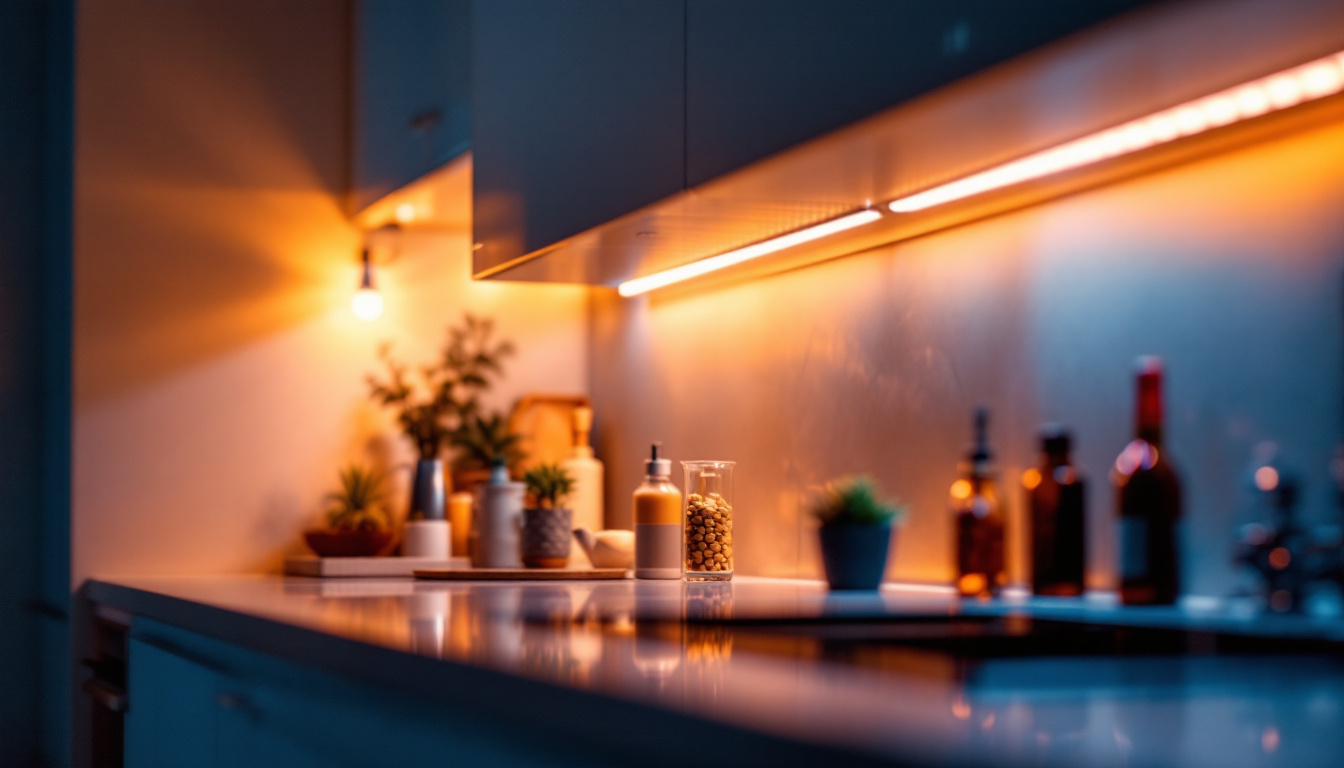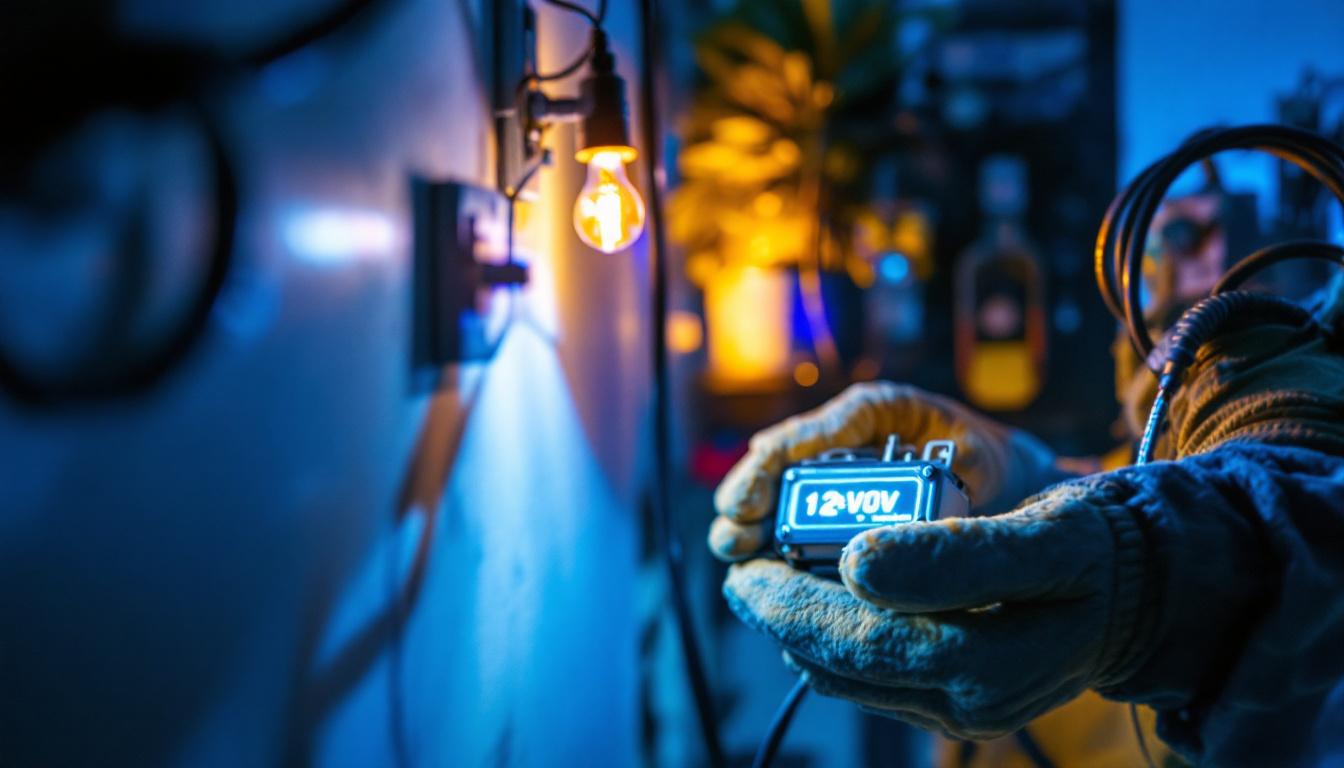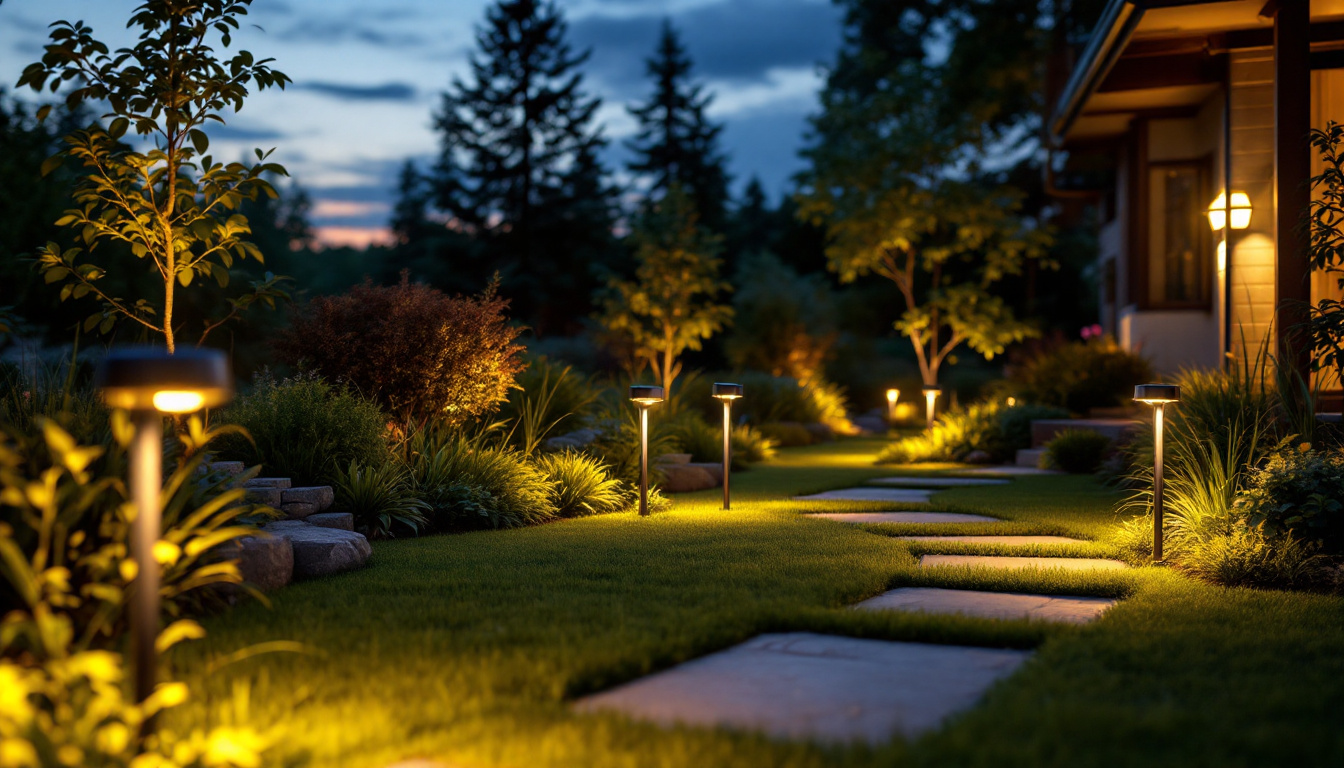
In the realm of interior design, lighting plays a pivotal role in enhancing the aesthetic appeal and functionality of a space. Among the various lighting solutions available, LED strip cabinet lighting has emerged as a favorite among lighting contractors and designers alike. This innovative lighting option not only provides illumination but also adds a touch of elegance and sophistication to cabinetry.
LED strip lights are flexible, energy-efficient, and versatile, making them ideal for various applications, particularly in kitchens, wardrobes, and display cabinets. This article delves into the advantages of LED strip cabinet lighting and how it can transform lighting designs, providing insight into installation techniques, design ideas, and best practices.
One of the standout features of LED strip cabinet lighting is its ability to create a warm and inviting ambiance. By strategically placing these lights within cabinets or under shelves, homeowners can highlight their favorite dishes, collectibles, or decorative items, turning ordinary storage spaces into stunning focal points. The soft glow emitted by LED strips can also enhance the overall mood of a room, making it feel more cozy and welcoming, especially during evening gatherings or family dinners.
Moreover, LED strip lights come in a variety of colors and brightness levels, allowing for customization that suits individual tastes and styles. Whether one prefers a subtle white light for a minimalist look or vibrant colors for a playful vibe, the options are nearly limitless. This adaptability not only caters to personal preferences but also enables designers to create dynamic lighting schemes that can change with the seasons or occasions, further enriching the visual experience of any space.
One of the most significant advantages of LED strip lighting is its energy efficiency. Compared to traditional incandescent and fluorescent lights, LED strips consume considerably less power while providing the same, if not better, luminosity. This efficiency not only reduces electricity bills but also contributes to a more sustainable environment.
Contractors can leverage this advantage when discussing lighting options with clients, emphasizing the long-term savings associated with LED technology. Additionally, the low heat output of LED strips minimizes the risk of overheating, making them safer for enclosed spaces like cabinets. This feature is particularly important in areas where heat-sensitive items, such as food or delicate materials, are stored. By choosing LED lighting, homeowners can enjoy peace of mind knowing that their cabinets remain safe and cool, even when the lights are on for extended periods.
LED strips are available in various lengths, colors, and brightness levels, allowing for a high degree of customization. Their flexible nature enables them to be installed in tight spaces or along curved surfaces, making them an ideal choice for intricate cabinet designs.
Contractors can creatively integrate LED strips into various cabinetry styles, from modern minimalist designs to more traditional setups. This adaptability opens up a world of possibilities for enhancing the visual appeal of any space. For instance, LED strips can be installed under shelves to create a floating effect, or within the cabinetry itself to provide a seamless look. Additionally, the ability to cut the strips to fit specific dimensions means that even the most unconventional cabinet shapes can be illuminated beautifully, ensuring that every corner of the design is highlighted.
Beyond functionality, LED strip cabinet lighting significantly enhances the aesthetics of a room. The soft glow emitted by these lights can create inviting atmospheres, highlighting the beauty of cabinetry and its contents. Whether illuminating a glass-front cabinet displaying fine china or accentuating the sleek lines of a modern kitchen, LED strips can elevate the overall design.
Moreover, the ability to choose different color temperatures—from warm whites to cool blues—allows contractors to tailor the lighting to match the desired ambiance of a space. This versatility in color and intensity can dramatically change the perception of a room. For example, warmer tones can evoke a cozy and intimate feel, perfect for a dining area, while cooler tones can impart a clean and contemporary vibe, ideal for a workspace. Furthermore, the use of dimmable LED strips adds another layer of control, enabling homeowners to adjust the lighting according to their mood or the time of day, enhancing both functionality and comfort in their living spaces.
Effective installation of LED strip cabinet lighting begins with careful planning. Contractors should assess the cabinet design and determine the best locations for the strips to achieve optimal illumination. Key considerations include the type of cabinet, the items stored within, and the desired lighting effect.
Creating a layout plan can help visualize the final outcome, ensuring that the lighting is both functional and aesthetically pleasing. This step is crucial for avoiding common pitfalls, such as uneven lighting or dark spots.
Most LED strip lights come with an adhesive backing for easy installation. However, the choice of adhesive can significantly impact the longevity and effectiveness of the installation. For cabinets that experience temperature fluctuations or high humidity, a stronger adhesive or additional mounting hardware may be necessary.
Contractors should also consider the surface material of the cabinet. For instance, LED strips may adhere better to smooth surfaces than to textured ones. In cases where the adhesive may not suffice, using mounting clips or channels can provide additional support and ensure a clean finish.
Proper wiring and power supply are essential for the successful installation of LED strip lighting. Contractors must ensure that the power supply matches the voltage requirements of the LED strips being used. Additionally, it is crucial to plan the wiring layout to minimize visible cords and maintain a clean appearance.
When installing multiple strips, using connectors can simplify the process and reduce the risk of voltage drop. It is also advisable to incorporate dimmers or smart controls to provide clients with flexibility in adjusting the lighting according to their needs.
One of the most popular applications for LED strip lighting is under-cabinet illumination. This design not only enhances visibility for tasks such as cooking and food preparation but also creates a warm ambiance in the kitchen. By installing LED strips beneath upper cabinets, contractors can provide effective task lighting while adding a stylish touch.
Incorporating dimmers allows users to adjust the brightness, making it easier to set the mood for different occasions, from casual family dinners to formal gatherings.
For cabinets that display decorative items or fine china, inside-cabinet lighting can dramatically enhance the visual appeal. By placing LED strips along the shelves or inside the cabinet, contractors can create a stunning showcase that draws attention to the items within.
Using warm white LED strips can create a cozy and inviting atmosphere, while colored strips can add a playful touch to a more contemporary design. This approach not only elevates the aesthetics but also improves functionality by making it easier to locate items.
Display cabinets can benefit immensely from accent lighting provided by LED strips. By strategically placing strips along the edges or behind shelves, contractors can create a halo effect that highlights the cabinet’s features and contents. This technique is particularly effective in retail environments or home settings where showcasing collectibles is desired.
Additionally, using RGB LED strips allows for dynamic color changes, enabling users to customize the display according to their preferences or special occasions.
Selecting the appropriate color temperature is crucial for achieving the desired ambiance. Warm white (2700K-3000K) is often preferred for residential settings, as it creates a cozy and inviting atmosphere. On the other hand, cool white (4000K-5000K) is ideal for task lighting in workspaces, providing clarity and focus.
Contractors should consider the overall color scheme of the room and the purpose of the cabinet when recommending color temperatures to clients. A well-thought-out selection can enhance the overall design and functionality of the space.
To achieve a professional look, it is essential to maintain consistent brightness across all installed LED strips. This can be accomplished by using strips from the same manufacturer and ensuring they are all from the same production batch. Variations in brightness can create an uneven appearance, detracting from the overall aesthetic.
Additionally, contractors should be mindful of the length of the LED strips. Longer runs may require additional power supplies or amplifiers to ensure uniform brightness throughout the installation.
While LED strip lighting is known for its longevity, regular maintenance is still necessary to ensure optimal performance. Dust and dirt can accumulate on the strips, diminishing their brightness and affecting the overall look. Contractors should advise clients on proper cleaning techniques, such as using a soft, damp cloth to wipe down the strips without damaging them.
Furthermore, it is essential to periodically check the wiring and connections to prevent any issues that may arise over time. Encouraging clients to schedule regular maintenance checks can prolong the lifespan of the installation and keep it looking its best.
LED strip cabinet lighting is a transformative solution that offers numerous advantages for both contractors and clients. Its energy efficiency, versatility, and aesthetic appeal make it an ideal choice for various applications, from residential kitchens to retail display cabinets. By understanding the installation techniques, design ideas, and best practices, lighting contractors can effectively harness the power of LED strip lighting to create stunning and functional spaces.
As the demand for innovative lighting solutions continues to grow, embracing technologies like LED strip lighting will not only enhance design capabilities but also elevate the overall client experience. By staying informed about the latest trends and techniques in lighting design, contractors can position themselves as leaders in the industry, delivering exceptional results that meet the evolving needs of their clients.
Ready to elevate your lighting designs with the efficiency and elegance of LED strip cabinet lighting? Look no further than LumenWholesale for all your lighting needs. We provide contractors with high-quality, specification-grade lighting products at unbeatable wholesale prices. Our extensive selection is designed to meet the highest industry standards, ensuring you get reliable, high-performance lighting for every project. Plus, with free shipping on bulk orders, you can enjoy premium lighting solutions at the best value — without hidden fees or compromises. Discover the perfect blend of quality, affordability, and convenience at LumenWholesale and make your next project shine.

Discover why a 12 Volt Transformer for LED lights is essential for lighting contractors.

Discover the transformative benefits of lawn solar lights for lighting contractors.

Discover how lighting contractors can sidestep common pitfalls while maximizing savings with Lighting New York coupon codes.
Discover the true brightness of 10 lumens and learn essential tips for lighting contractors.